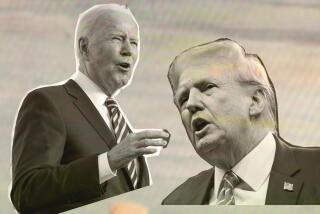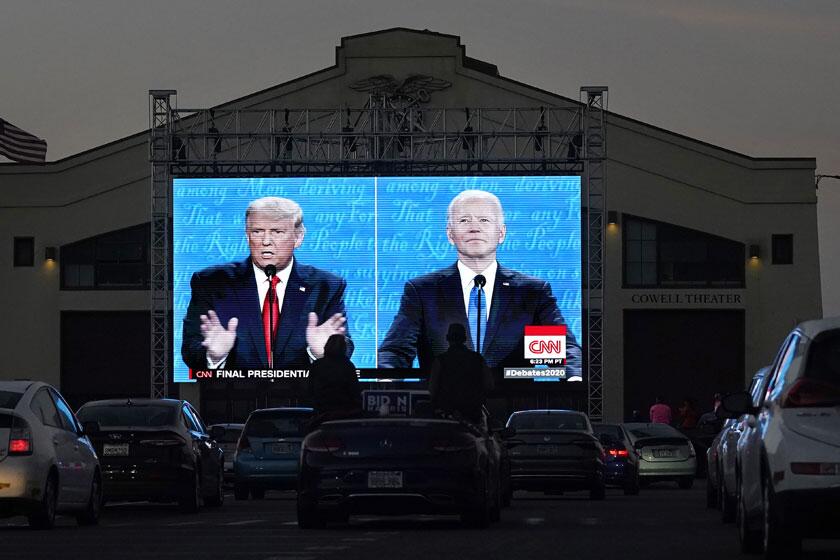Jobless Rate Bad for U.S., Worse for California
In more bad news about the economy, the federal government reported Friday that the U.S. unemployment rate inched up to 7.0% in June, from 6.9% in May, as the nation’s labor markets added a scant 13,000 jobs.
The report was even worse for California, where unemployment climbed to 9.1% in June, from 8.7% the month before, as the state lost 22,400 jobs. Particularly hard hit was Los Angeles County, where the volatile jobless rate climbed to 9.6%, from 9.1%.
In Orange County, the jobless rate for May--the latest month for which data is available--was 6%, up from 5.5% in April. The unemployment rates for the individual counties are released several weeks after the state and national figures.
“It’s generally dreadful,” said David Wyss, research director for the economic consulting firm DRI/McGraw-Hill.
The silver lining in Friday’s news, economists said, is that the report should calm short-term concerns about inflation re-emerging. In turn, analysts said, that should deter Federal Reserve Board members from deciding to push up short-term interest rates when they meet Tuesday.
“You can’t kill the economy (by raising interest rates) just because you’re a little worried about inflation two years from now,” Wyss said. “Let the airplane take off before you manage a soft landing.”
On Wall Street, the unemployment report contributed to a 26.57-point decline Friday in the Dow Jones industrial average.
Late in the day, President Clinton’s chief economic adviser announced that the Administration is scaling back its forecast for 1993 economic growth for a second time because of persistent economic weakness. Laura D’Andrea Tyson, chairwoman of the President’s Council of Economic Advisers, said the forecast scheduled for release later this month probably would put growth at slightly below 2.5%.
Early this year, the Administration forecast growth of 3.1%, but later lowered the figure to 2.8%. Tyson cited Congress’ rejection of Clinton’s economic stimulus package as a key factor behind the “modest” economic recovery.
The June unemployment report did not appear to play a major role in the decision to revise the forecast. Clinton, speaking at a news conference, cautioned against reading too much into one month’s figures and noted that, overall, more than 900,000 jobs have been added in 1993.
Senate Minority Leader Bob Dole (R-Kan.) blamed June’s rise in joblessness on Clinton’s push for tax increases and spending cutbacks as part of a $500-billion package to reduce the deficit.
“This is a direct result of the big, big tax package before the Congress now,” Dole told reporters. “Small business is so concerned about tax increases they are not going to hire anybody. The best thing we could do is kill this package and start over. There are enough of us here who could put together a bipartisan package, but I don’t expect that to happen.”
Economists generally played down the possibility that the nation is slipping back into a recession, and some said the government is likely to increase its estimate of June’s job gains when it releases updated figures next month. In fact, on Friday the government boosted its estimates for job growth in April and May, raising the total for the two months by 45,000, to a robust 460,000.
Still, the June unemployment report “certainly raises the question of whether the primary concern right now should be the deficit or economic performance,” said Lynn Reaser, chief economist for First Interstate Bancorp in Los Angeles.
Worries about inflation deepened when the economy showed unexpected strength in April and May but Friday’s report, Reaser said, indicates that “California remains in recession while the nation is continuing on its erratic track.”
The jobless news overshadowed two other, more upbeat assessments of the economy Friday. An index of newspaper help-wanted advertising for May rose to a seasonally adjusted level of 101, up five points from April, according to the Conference Board business research group.
In addition, the University of Michigan’s consumer sentiment index for June rose to 81.5, from 80.3 in May, although it was still down from 85.6 in April.
Wyss said, however, that the chief problem in the economy “isn’t confidence but the lack of income and jobs.”
Nationally, the unemployment report showed that the manufacturing sector of the U.S. economy was particularly weak, losing 53,000 jobs, and suffering a decline for the fourth month in a row.
On top of that, average hours worked, overtime and hourly wages also fell. The increase in the U.S. jobless rate to 7.0% was the first monthly rise this year and returned joblessness to the level where it remained from February through April.
The rise in the California jobless rate to 9.1% marked the second consecutive monthly increase, but the figure remained below the recessionary high of 10.1% in November.
In California, the survey of non-farm employment showed declines in each of the nine major categories except the transportation and utilities group, which was up a meager 300 jobs.
The rise in Los Angeles County’s jobless rate to 9.6% in June followed three consecutive months of declines, down from a recessionary peak of 11.2% in February. The number of unemployed climbed by 23,000, to 431,000, while the number of people with jobs dropped by roughly the same amount to 4,072,000.
Times staff writers William J. Eaton in Washington and John O’Dell in Orange County contributed to this story.
Jobless Rates
Here are U.S. and California unemployment rates, in percentages, over the last year:
U.S. Calif. June 7.0 9.1 May 6.9 8.7 April 7.0 8.6 March 7.0 9.4 Feb. 7.0 9.8 Jan. 7.1 9.5 Dec. ’92 7.2 9.8 Nov. 7.2 10.1 Oct. 7.3 9.8 Sept. 7.4 9.4 Aug. 7.5 9.8 July 7.6 8.9 June 7.7 9.5
More to Read
Get the L.A. Times Politics newsletter
Deeply reported insights into legislation, politics and policy from Sacramento, Washington and beyond. In your inbox three times per week.
You may occasionally receive promotional content from the Los Angeles Times.






